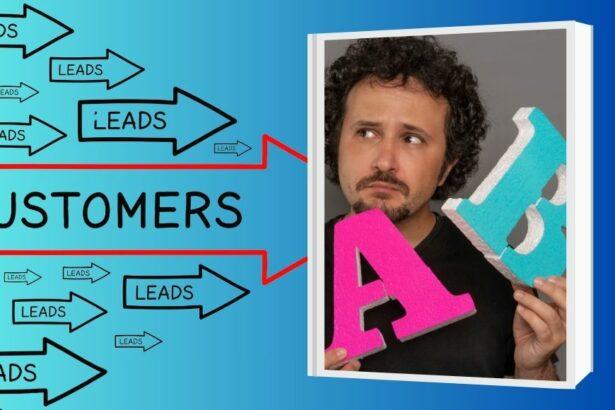Email newsletters stand as a timeless facet in the digital communication realm, offering a direct line to your audience’s inbox. This digital tool serves not only as a bridge between businesses and consumers but also as an essential element in a robust marketing strategy. Understanding the intricacies of email newsletters—from their basic definition to launching your first campaign—can significantly amplify your brand’s voice and consumer engagement.
Whether you’re a startup itching to spread the word, a seasoned marketer aiming to enhance engagement, or a small business looking to increase sales, mastering the art of email newsletters is a crucial step. In this comprehensive guide, we delve into what email newsletters really are, explore their benefits, offer strategies for collecting email addresses, and provide a practical roadmap for getting started. We’ll also tap into current trends and showcase real-world examples of how various businesses successfully utilize newsletters.
What are Email Newsletters?
At their core, email newsletters are periodic dispatches sent by businesses or individuals to a list of subscribers via email. These communications are typically used to inform, engage, and convert subscribers, offering content that can range from educational to promotional. While some newsletters are brief and focused, others might include a variety of content to cater to diverse interests within the audience.
The strength of email newsletters lies in their adaptability and personalization capabilities. Unlike broad-spectrum advertising, newsletters can be tailored to address the specific interests and needs of your subscribers, creating a more personal connection and increasing the likelihood of engagement and conversion. They serve multiple purposes: building relationships, boosting brand awareness, driving sales, and more.
Benefits of Email Newsletters
The benefits of employing email newsletters in your marketing strategy are manifold. Firstly, they enhance direct engagement with your audience, allowing for regular interaction. This consistent communication helps to foster a sense of community and loyalty among your subscribers. Additionally, email newsletters are cost-effective compared to many other marketing channels, offering a higher return on investment by directly reaching those who have already shown interest in your content.
Moreover, newsletters drive traffic to your website, enhancing your SEO efforts and increasing your online visibility. They also provide invaluable insights into consumer behavior through analytics and feedback, enabling data-driven decisions to refine marketing strategies and content offerings.
How to Collect Email Addresses
Building a robust email list is the foundation of a successful newsletter campaign. The process starts with ensuring that you’re attracting the right subscribers—those genuinely interested in what you offer. Implementing ethical and efficient methods to collect email addresses is crucial for long-term success. Offering value through sign-up incentives, such as free ebooks, discounts, or exclusive access to content, can significantly boost your subscription rates.
It’s also important to make the subscription process as easy as possible. Embed sign-up forms on your website, leverage social media platforms, and consider offline opportunities for newsletter sign-ups. Always ensure you comply with data protection regulations like GDPR, which safeguard privacy and build trust with your subscribers.
Getting Started with Email Newsletters
Launching an email newsletter can seem daunting, but with the right approach, it becomes a manageable and fruitful endeavor. The first step is choosing the right email marketing platform. Tools like Mailchimp, Constant Contact, or AWeber offer user-friendly interfaces, template designs, automation capabilities, and insightful analytics.
Once your platform is set, designing your first newsletter is key. Focus on clean, accessible design and content that adds real value. A/B testing different elements like subject lines, content formats, and sending times can help you understand what resonates best with your audience. Remember, consistency is key—not just in how often you send your newsletter but in the quality and relevance of the content you deliver.
Trends in Email Newsletters
Staying ahead of the curve with the latest trends is essential for keeping your newsletters effective and engaging. Interactive content such as polls, surveys, and videos are increasing in popularity, providing more dynamic and engaging user experiences. Personalization and segmentation continue to be critical, as they significantly increase open and click-through rates by catering content specifically to the interests and behaviors of different subscriber segments.
Moreover, the integration of artificial intelligence in email marketing is on the rise, offering sophisticated ways to personalize content, optimize send times, and predict subscriber behavior, thereby increasing the effectiveness of email campaigns.
Examples of Successful Business Use Cases
Various businesses leverage email newsletters with great success. For instance, a tech startup might use newsletters to update subscribers on product developments and industry news, while a retail brand might send out weekly specials and exclusive discounts. Non-profits often use newsletters to keep their supporters informed about ongoing projects, upcoming events, and fundraising initiatives.
Each of these examples showcases how email newsletters can be tailored to meet specific business needs and objectives, emphasizing the versatility and effectiveness of this marketing tool.
Conclusion
In conclusion, email newsletters are a powerful, direct, and personal way to communicate with your audience. They not only help in building relationships and enhancing brand visibility but also drive sales and foster customer loyalty. With the right strategy and tools, anyone can launch a successful email newsletter, making it a vital component of a comprehensive digital marketing strategy. By staying informed about the latest trends and continuously refining your approach based on subscriber feedback and analytics, your newsletters can consistently deliver value to both your audience and your business.



